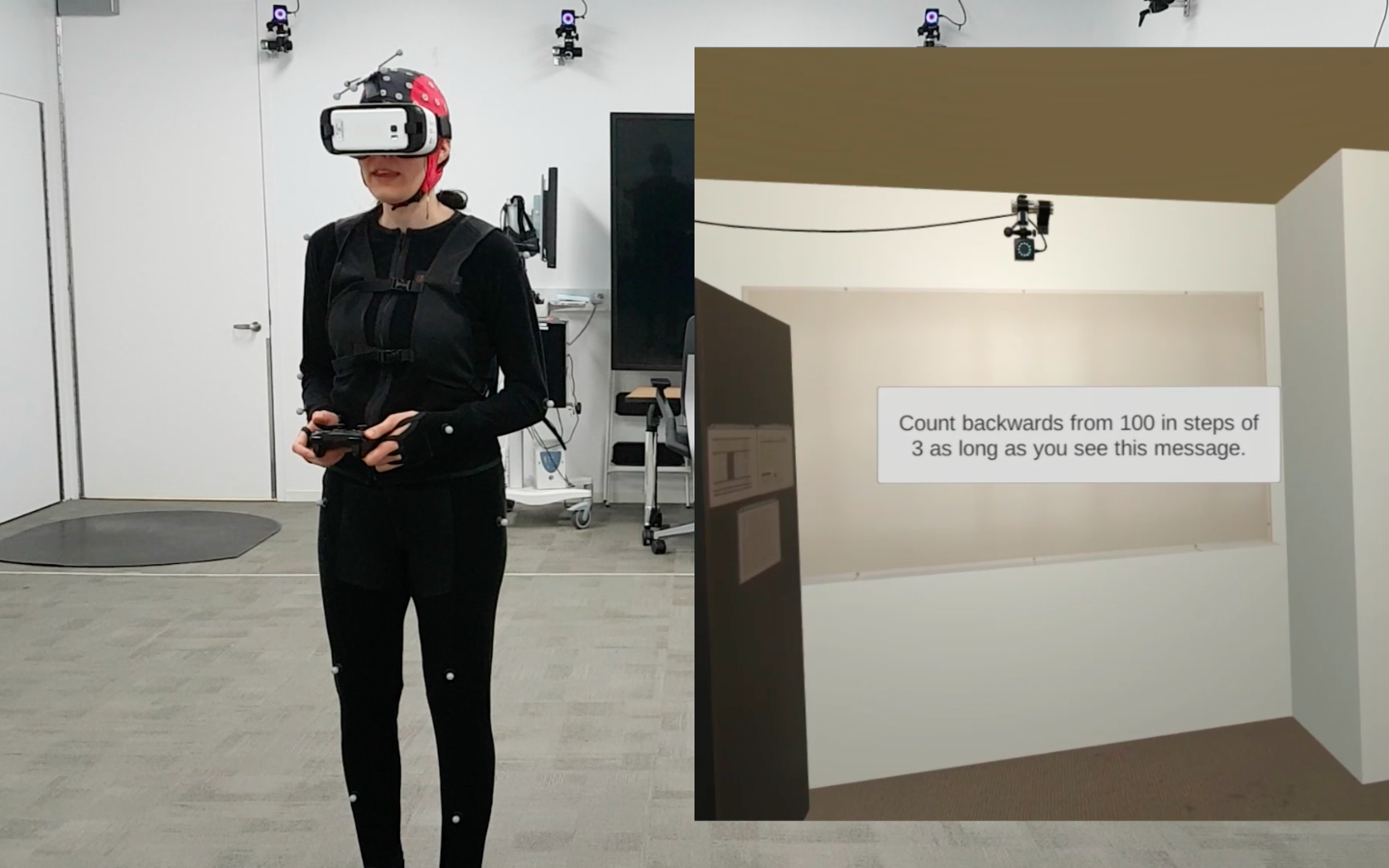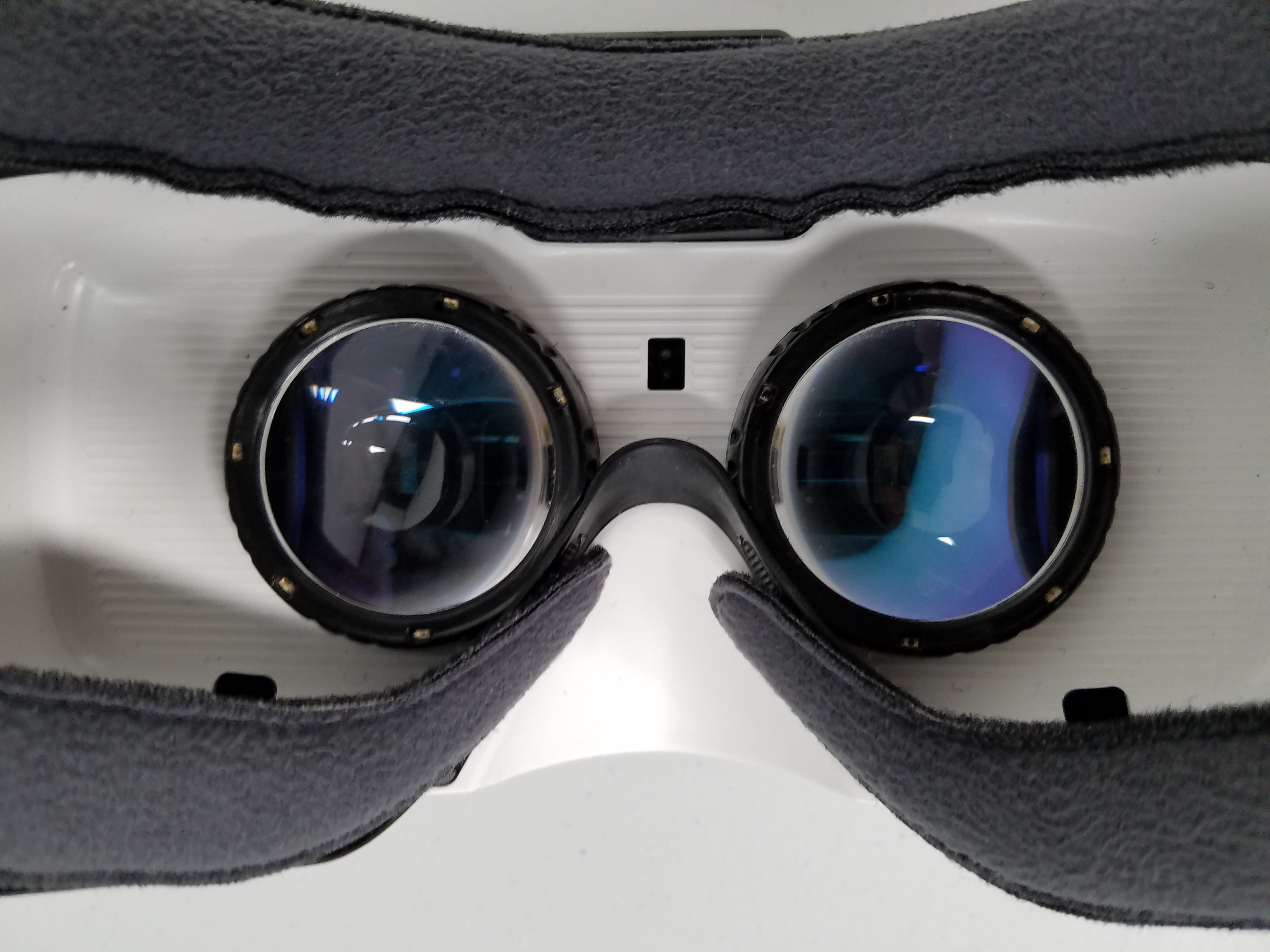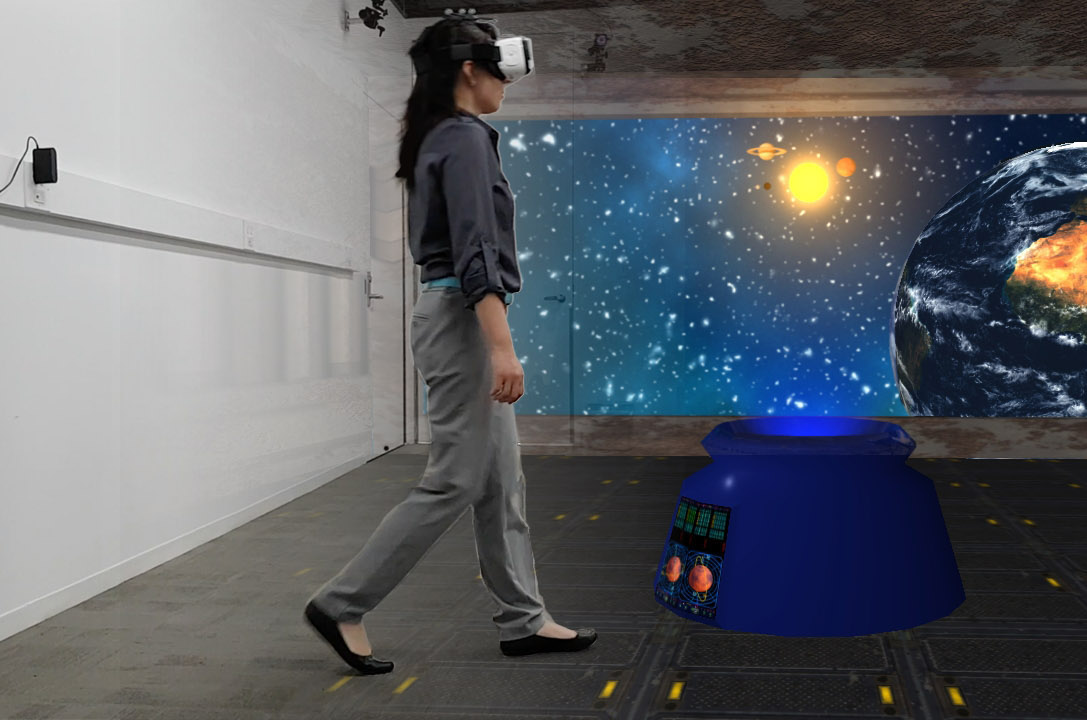


The brain is composed of neurons that conducts electrical activity. Specific frequencies have been found to correspond to certain active decision-making behavior and thought processing.
At the UCLA VR Lab, Dr. Nanthia Suthana and post-doc Dr. Zahra Aghajan study spatial navigation and memory. In this specific study, they ask, "What are the neural correlates for how people remember locations?" For the past two years, I have led the development of their task.
Using Unity, I programmed the task that asks the participant to walk around a room in search of lit up pillars. In order to give the participants free movement, we couldn't use a tethered VR system. Instead, with a network integration script from collaborators (credit to Interactive Lab), I combined the Samsung Gear VR with an OptiTrack motion capture camera system. The Unity application received real-time coordinate information.
The task originally began in a 3D replica of a real office (credit to Fab Lab), but has since included another practice room I created. I worked with the lighting system in Unity for efficient phone memory usage while preserving good graphics quality.
The design of the study measures multiple human behaviors. An eyetracking headset is used for saccade detection and post-task analysis. A bluetooth controller is also integrated to allow additional interaction. An external file with time and position information is outputed for post-task analysis also.
Look out for our publications regarding this research! This study has been presented at multiple conferences.